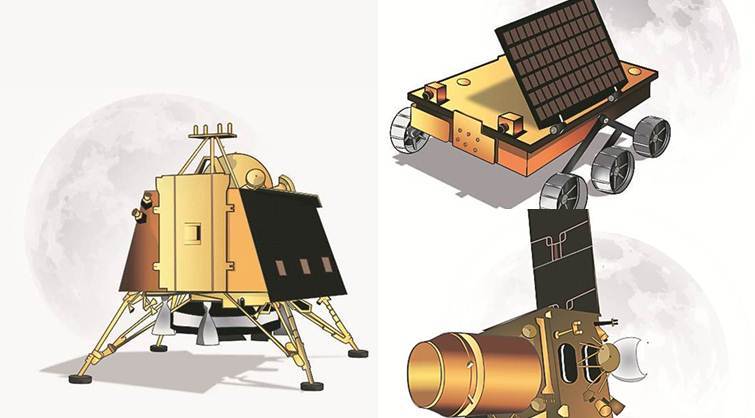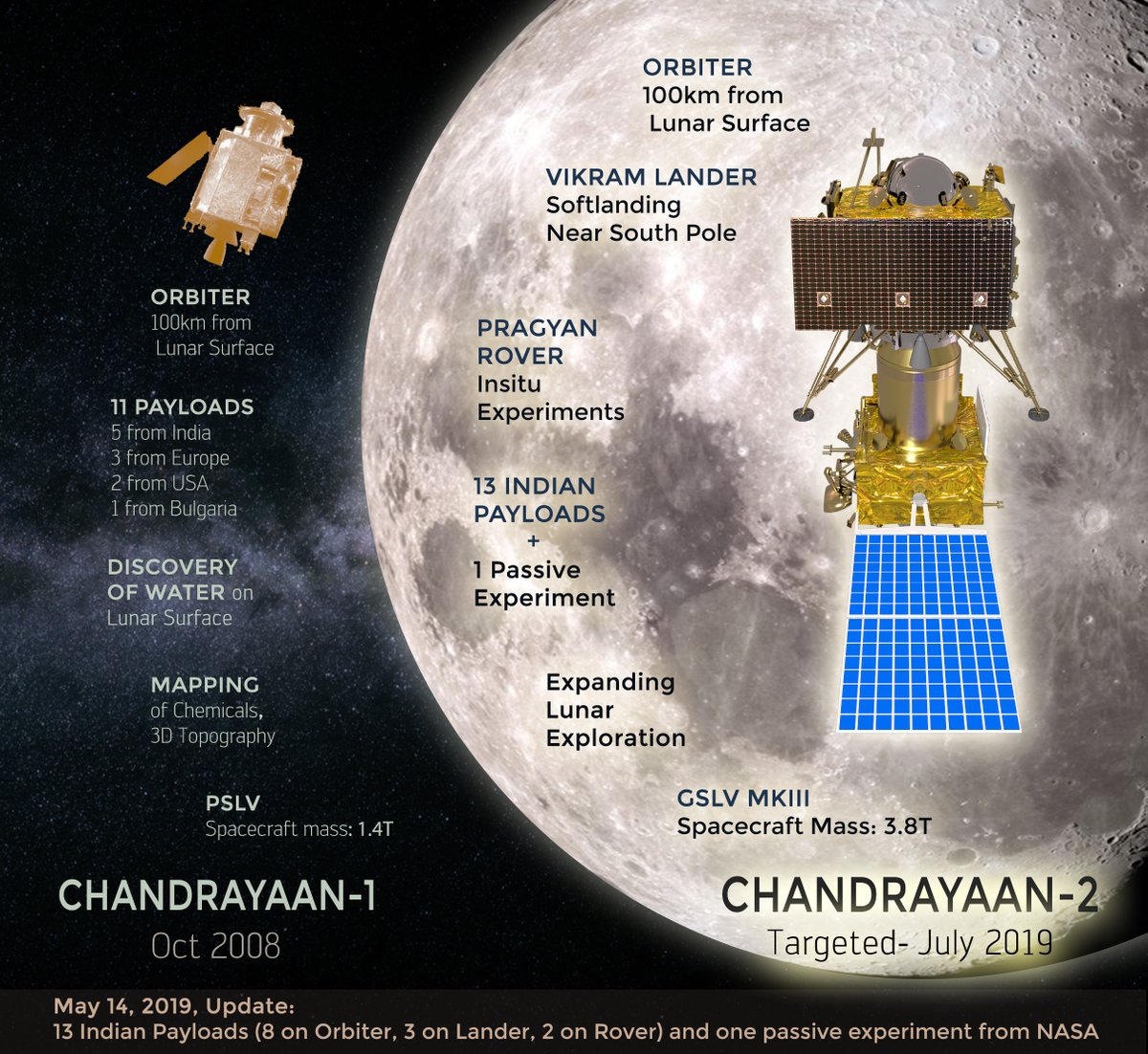Indian Space Research Organisation (ISRO) is all set to launch Chandrayaan-2 on July 15. This is India’s second lunar mission and is expected to touch down on the lunar surface on September 06 later this year. The mission duration is about 15 days or one lunar day.
It comes after much-hyped Mangalyaan (as the name indicates, it was a Mars mission) launch back in the year 2013 which costs approximately INR 447 Cr (lesser than the cost of Hollywood blockbuster Avengers: Endgame). Chandrayaan-2 will be ISRO’s first inter-planetary mission to land a rover on any celestial body and will put India into the club of elite nations landing on the moon.
Built at a cost of INR 800 Cr and weighing approximately 3290 kg, Chandrayaan-2 has three modules: the orbiter, lander, and rover. Once Chandrayaan-2 reaches the lunar orbit, the lander will separate and land at the south pole of the moon, an area which has not been explored by others, so far most of the landings on the moon have been near the equator mainly because that area receives more sunlight to power its solar energy powered instruments.

(From left-Vikram lander, Pragyan Rover, Orbiter) Orbiter will observe the lunar surface and relay communication between Earth and the Lander named Vikram. The Rover is a 6-wheeled, AI-powered vehicle named Pragyan. ISRO
The south pole of the moon can be a probable place to find water. India in fact, will beat Israel to become the fourth country after the US, Russia, and China to land spacecraft on the moon. As confirmed by ISRO on twitter, it will carry 13 Indian Payloads and one passive experiment from NASA too.

The inter-planetary mission Chandrayaan 2 is headed by two women scientists – Ritu Karidhal and M Vanitha.
M. Vanitha is the first woman to hold the position of Project Director. She is a design engineer by training and she received the Best Woman Scientist award in 2006 by the Astronomical Society of India.
Ritu Karidhal, also known as the “Rocket Woman of India’ became famous with the launch of the Mars Orbiter Mission where she was the deputy operations director.
And the team boasts of over 30% female workforce, rightfully earning the title of ‘Rocket women’. At ISRO, 20% of the workforce comprises of women, but in the scientists and technical department, the ratio falls to 12%.

Its predecessor Chandrayaan-1 which was launched in 2008, costed around INR 386 Cr and carried 11 payloads. Its orbiter was placed at 100 km from the moon and took 100’s of snaps of the moon. Through its lander, the Indian scientists were also able to confirm the presence of water on the moon.
